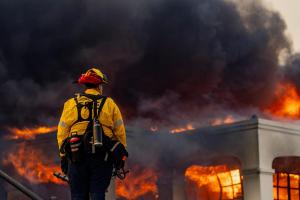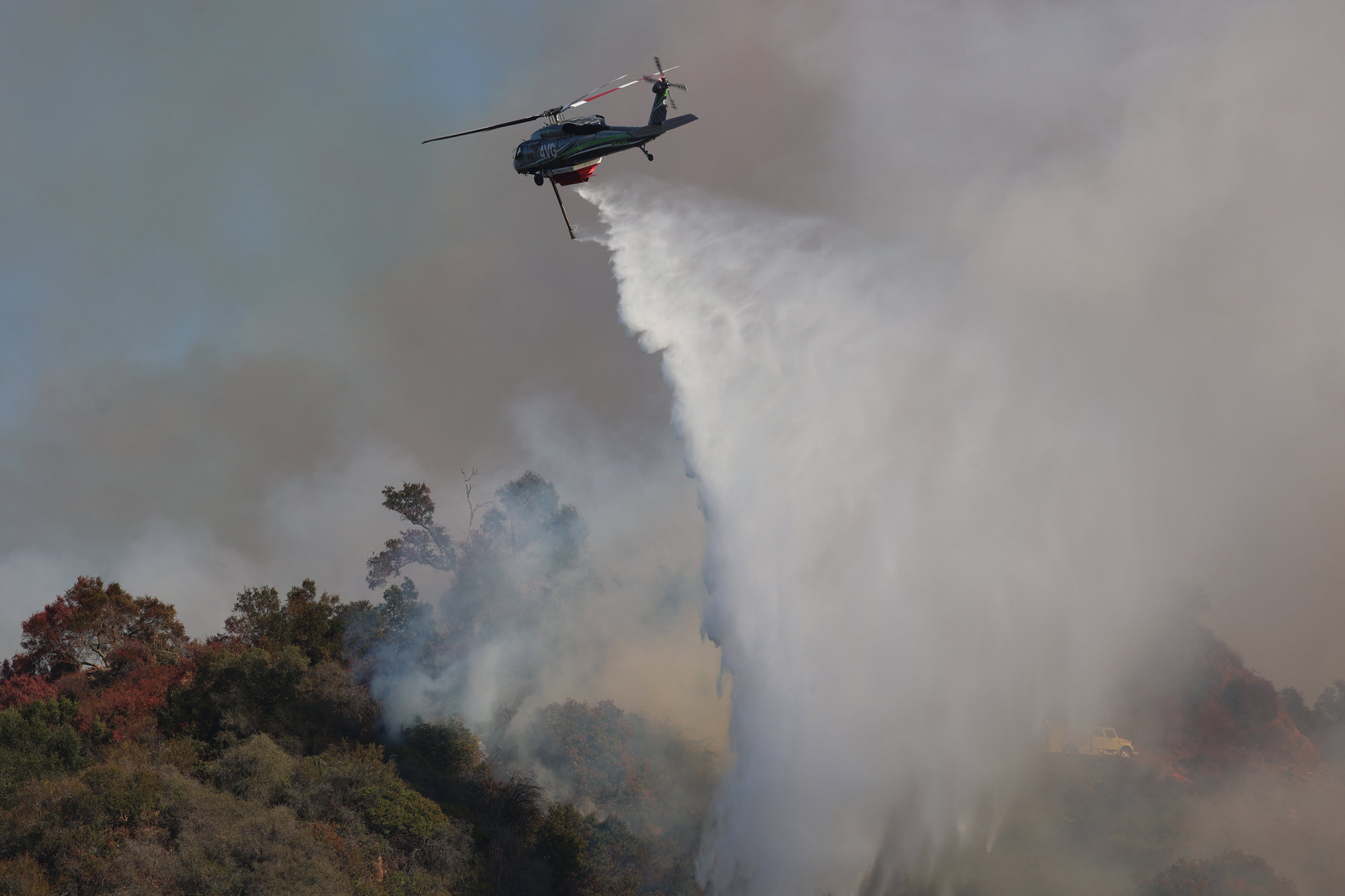
Deadly wildfires on the edge of Los Angeles are the result of two years of wet conditions, a year of drought and hurricane-force Santa Ana winds, University of Virginia experts said.
Several fires have combined to burn nearly 40,000 acres, destroying thousands of structures and killing at least two dozen people.
The National Weather Service issued red flag warnings and high wind warnings across Southern California on Monday and Tuesday with “particularly dangerous situation” warnings for most of the fire-affected area.
“Dryness is the major factor, and this fire was exacerbated by the winds that are occurring right now,” said Venkataraman Lakshmi, John L. Newcomb Professor of Engineering in UVA’s Department of Civil and Environmental Engineering. “The dry conditions have reduced the vegetation water content and as a result, the vegetation is very susceptible to burning.”
“The two previous years were very wet, with almost double the average annual rainfall. In these water-limited ecosystems, that leads to greater growth, more leaf growth and leaf litter, which desiccates under the hot, dry winds,” said Larry Band, UVA’s Ernest Ern Professor of Environmental Science, who also holds an appointment in civil and environmental engineering.
The Palisades fire, the largest of the four active blazes, began west of Los Angeles and north of Santa Monica. It burned toward Malibu and to the Pacific Ocean, while the Eaton fire burned parts of Pasadena and Altadena. Smaller fires, now mostly contained, also burn in the area.

Little to no rain has fallen in the area since last summer, with late autumn and winter being the usual wet seasons for the region. The National Drought Mitigation Center’s data shows the area around Los Angeles morphed from normal conditions in October to severe drought by Jan. 7. The same source shows this year’s soil moisture content in the region being the driest since 2015.The area’s natural vegetation adds to the danger, UVA experts say.
“The native vegetation is chaparral, a family of species that are fire-adapted, burn periodically and resprout. They dominate local ecosystems, as the fires keep out competitors,” Band said. “The chaparral survives the dry, hot Mediterranean climate summers by secreting a resin that coats their leaves, reducing water loss. The resin is very volatile and burns hot.”
Band said Santa Ana winds are common in the fall and into early winter, but there is usually some rain during the winter wet season.
“The winds themselves can drop the relative humidity to a few percent, further drying out and making more fire-prone the chaparral and the leaf litter that accumulates on the ground,” Band said.
The combined dry climate and flammable flora have created fires and firestorms before. In October 1978, the Agoura-Malibu and Mulholland Canyon fires burned more than 500 homes and killed three people. The Agoura-Malibu fire grew into a firestorm, a fire so intense it creates its own wind system.

“Steep mountainous terrain tends to funnel fires upslope, but with the intense Santa Ana winds, the fire is swept downslope toward the ocean,” Band said. “That’s why there was so much devastation at lower elevations, like downtown Pacific Palisades.”
Band, who did graduate work at the University of California, Los Angeles, and spent time in the Santa Monica and San Gabriel mountains, said once the fires have been extinguished, new dangers could await the burned areas in a few months.
“The lack of vegetation and disintegration of root systems tends to lead to significant landslides,” he said. “If there are strong rains later this winter, we could see destructive landsliding and flooding in these areas.”
Band and Venkat are hydrology experts and members of UVA’s multidisciplinary Link Lab, a community of researchers who use data and technologies to provide a better quality of life for citizens.